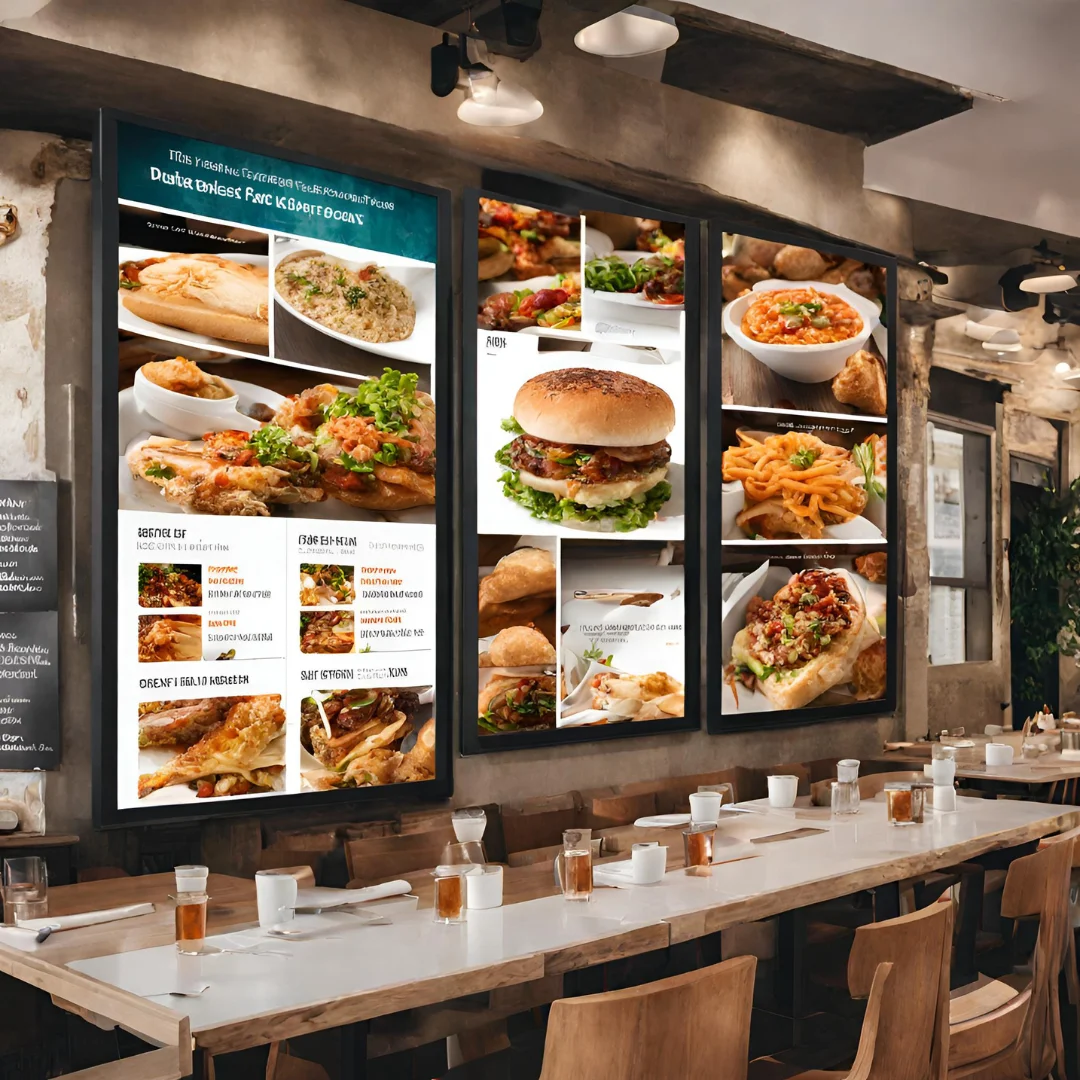In the fast-evolving scenario of the hospitality industry, restaurants are increasingly scouting for fresh and innovative solutions that optimize their customer experience, operational efficiency, and revenue generation. One such innovation that has been gaining popularity quickly is the digital signage. The technology that encompasses electronic displays for showing menus, promotions, and other relevant information is changing the way restaurants have been operating and communicating with their customers. This blog is a comprehensive understanding of how digital signage is delivering a tangible business impact on restaurant operations through improving efficiency and revenue.
Enhancing Customer Experience
Digital signage is an attractive and dynamic way to reach out to customers. Static menus are too overcrowded and too much to process, but similar information can be conveyed across in a new, neat, organized, and visually appealing manner through the means of digital signage. Not only does it serve to beautify the restaurant on the aesthetic front, but it also serves to add an edge to the entire dining experience.
For example, digital menu boards can instantly be changed to include daily specials, seasonal items, or limited availability items to ensure that content is always timely and fresh. Dynamic content serves customers with the most current up-to-the-minute information, which ultimately may drive more interest from the customer and more spending. In addition, high-definition images and video of food can directly influence appetite and customer selection while aiding in promoting high-profit item sales.
Boosting Operational Efficiency
The functions of digital signage go from customer engagement to the phenomenal improvement in operational efficiency. First on the list of the benefits is the ability to update content with ease. The traditional printed menu cards and marketing content take time to be designed, printed, and circulated. However, digital signage makes it possible to update the content at the touch of a button, at an instance and at a remote location, which saves the time and other resources such as funds. This extra ability is especially useful while working with chain restaurants that have more than one location, which enables uniform and synchronized updates of all the locations.
Additionally, digital signage can prove to be more effective in ordering. For instance, the use of digital menus in self-service kiosks can enable customers to make orders directly, and this will consequently cut back on the time that customers would spend waiting and allow the workforce to keep busy with other tasks, thus increasing productivity. This does not only make service faster, but it also cuts back on the likelihood of errors when it comes to order placement since customers will have time to go through their options before making an order. Greater accuracy in order placement can lead to increased customer satisfaction and more business on a repeat basis.
Effective Promotion and Upselling
Digital display is a powerful marketing and upselling device. A well-considered positioning of screens in places like the entrance, waiting area, and on the path to approach the point of checkout can ably engage customers and evoke buying decisions in them.
Dynamic content like time-bound promotions, combo offers, and add-on recommendations can be popped up to initiate upselling. For example, when a customer is in queue, awaiting an order placement, a digital display can pop up a special dessert or a new drink, and the customer can be nudged to add it to his or her order. There have been studies to prove that such visual nudges can have a significant impact on the average ticket size.
Further, digital signage can also be utilized for advertising loyalty programs and special events that shall attract repeat customers. By showing QR codes that can be scanned by the customers to get registered with the rewards program or for preferential discounts, companies can retain their customer base and enhance long-term growth in revenues.
Data-Driven Insights
Another key advantage of digital signage is the ability to gather and analyze data. The analytics functionality that comes with most digital signage software tracks customer engagement and interaction with the content on the screen. The data provides an opportunity to learn customer behavior and preference, which the restaurant can use to tailor its offerings and even marketing strategies to a high degree.
For example, if analytics are showing that a particular meal is likely to receive a larger portion of orders at a given time of day, then the restaurants will be able to redirect their marketing efforts and man-hour attention to try to capture the most orders for that particular time. This evidence-based approach allows for superior decision-making and, as such, a superior amount of efficiency and financial performance.
Environmental and Cost Benefits
Digital signage can also be environmentally friendly with the removal of paper menus and marketing materials. This not only works toward protecting resources but also goes hand in hand with the increasing consumer preference for environmentally conscious behaviors. Additionally, the cost savings from reduced printing costs and waste are also part of the overall cost savings for the restaurant.
Conclusion
Use of digital signage within the restaurant industry is not just another wave but a strategic move forward to enhance operations and lead to improved customer engagement. Offering itself as a dynamic and flexible communication platform, digital signage makes restaurants better in terms of the overall dining experience, operational efficiency, and revenue creation. With the increasing development of technology, the use of more advanced attributes like interactive displays and personalized messages is expected to further multiply the benefits, making digital signage a necessary technology for restaurants trying to stand apart from others in a highly competitive and evolving marketplace.





